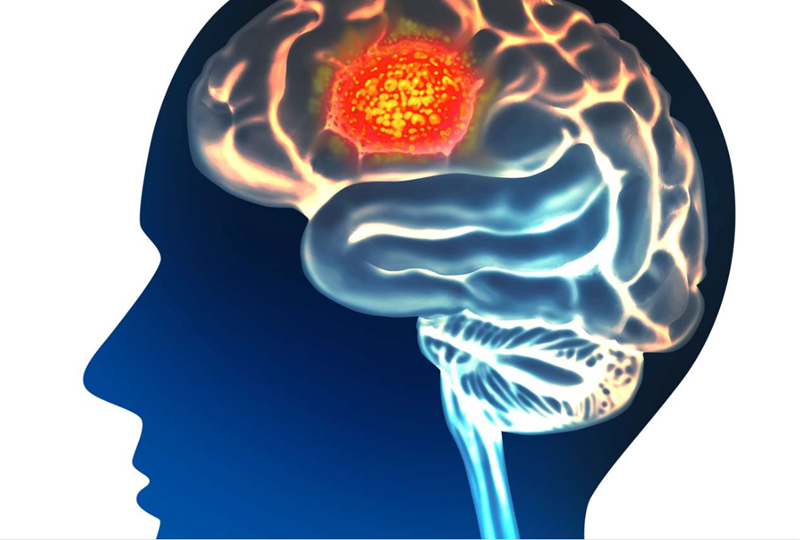Targeting Tumor-Secreted Protein May Improve Effectiveness of Glioblastoma Radiation Therapy

The team of researchers discovered that endocan, which is produced by endothelial cells lining blood vessels in the tumor, activates PDGFRA, a receptor on glioblastoma cells that drives tumor growth and makes the cancer resistant to standard therapies such as radiation.
The discovery, published in Nature Communications, suggests a path toward the development of therapies that specifically inhibit this interaction to not only slow tumor growth, but make glioblastoma more vulnerable to existing treatments.
“By targeting the crosstalk between glioblastoma and vascular endothelial cells, we can develop treatments that prevent the tumor from adapting and surviving. This could also improve the effectiveness of treatments especially, radiation, making them more successful in tackling this aggressive cancer,” said Dr Harley Kornblum, director of the UCLA Intellectual and Developmental Research Center, professor of psychiatry, pediatrics and molecular and medical pharmacology at the David Geffen School of Medicine at UCLA and co-senior author of the study.
Improving the effectiveness of treatments for glioblastoma is imperative. The average lifespan of someone diagnosed with the brain tumor is just 12 to 15 months, and only about 5% of people diagnosed with glioblastoma are alive five years after their diagnosis.
A major challenge in treating glioblastoma lies in its complexity. Brain tumors often rely on blood vessel cells, also known as vascular endothelial cells, to fuel their growth. These tumor blood vessels not only supply oxygen and nutrients, but also produce molecules that help the tumor survive. Understanding how these interactions work is key to finding new treatments and stopping the progression of glioblastoma, said Kornblum.
To understand how glioblastoma interacts with nearby blood vessel cells to fuel its growth, the team first used a database that they developed in a previous study to determine what molecules are being produced in the tumor blood vessels and how they work. Through this platform, the team identified endocan as a key candidate molecule in driving tumor growth.
To explore the functional role of endocan in brain tumors, the scientists used a combination of experimental models, including studying glioblastoma cells and blood vessel cells derived from patients, experimenting with genetically engineered mice that lack endocan, and testing tumor behavior in lab models.
Through these experiments, the team found different regions of the tumor play distinct functional roles, and that endocan not only supports tumor growth, but also defines the tumor’s geography, particularly the aggressive edge regions that often remain after surgery. That is, endocan helps to define the molecular characteristics of this edge region.
“Solving how tumors organize themselves is an important challenge,” said Kornblum, who also is a member of the UCLA Health Jonsson Comprehensive Cancer Center and the Eli and Edythe Broad Center of Regenerative Medicine and Stem Cell Research at UCLA. “While surgery can remove much of the tumor core, the infiltrative edge often remains following removal, leading to recurrence. Our research suggests endocan is a key player in this process, orchestrating both tumor cell behavior and the development of blood vessels that sustain tumor growth.”
At the same time, the team also made the surprising discovery that endocan interacts with a receptor on glioblastoma cells called PDGFRA, activating pathways that promote tumor growth and resistance to standard treatments. They found that tumors with high levels of endocan are more resistant to radiation therapy, one of the primary treatments for glioblastoma.
The researchers then demonstrated that blocking endocan’s interaction with PDGFRA using the targeted therapy drug ponatinib extended survival in preclinical models and improved the response to radiation therapy. These findings suggest that targeting endocan directly or disrupting its signaling pathways could open the door to new therapeutic strategies for glioblastoma.
Importantly, the study also connects endocan’s actions to cMyc, a protein pivotal in many cancers but difficult to target directly. "Inhibiting the endocan-PDGFRA axis may provide an indirect way to disrupt cMyc’s role in glioblastoma," said Kornblum.
Future research will focus on validating these findings in human tumors, particularly the cells at the infiltrative edge of glioblastomas. Additionally, the team plans to investigate whether targeting endocan can improve responses to radiation treatment.